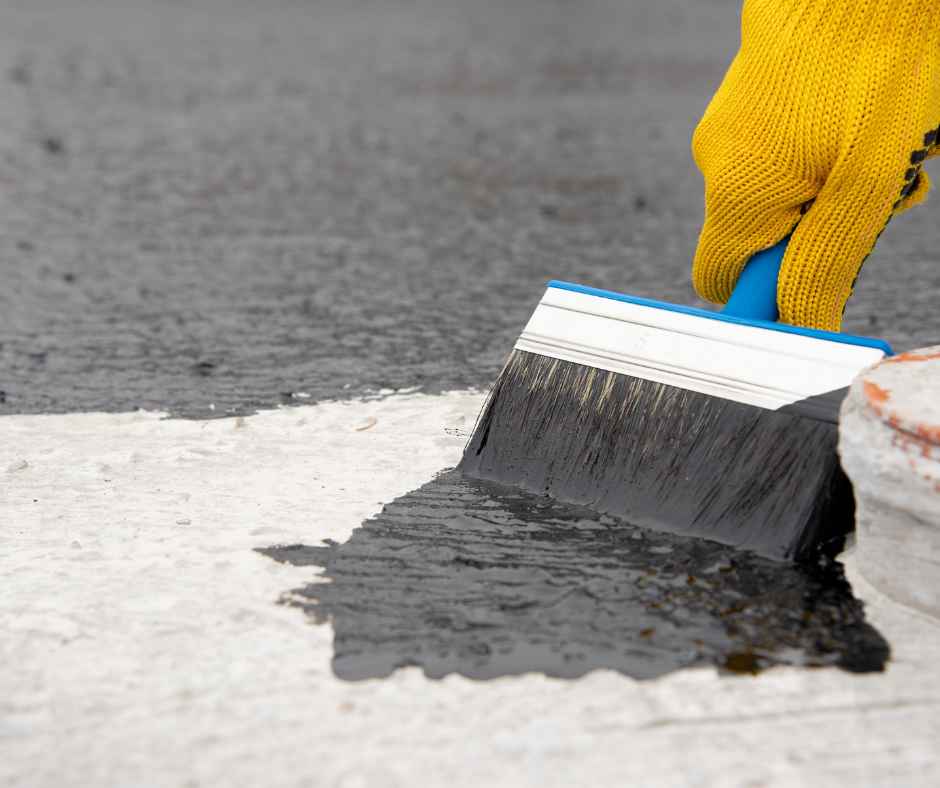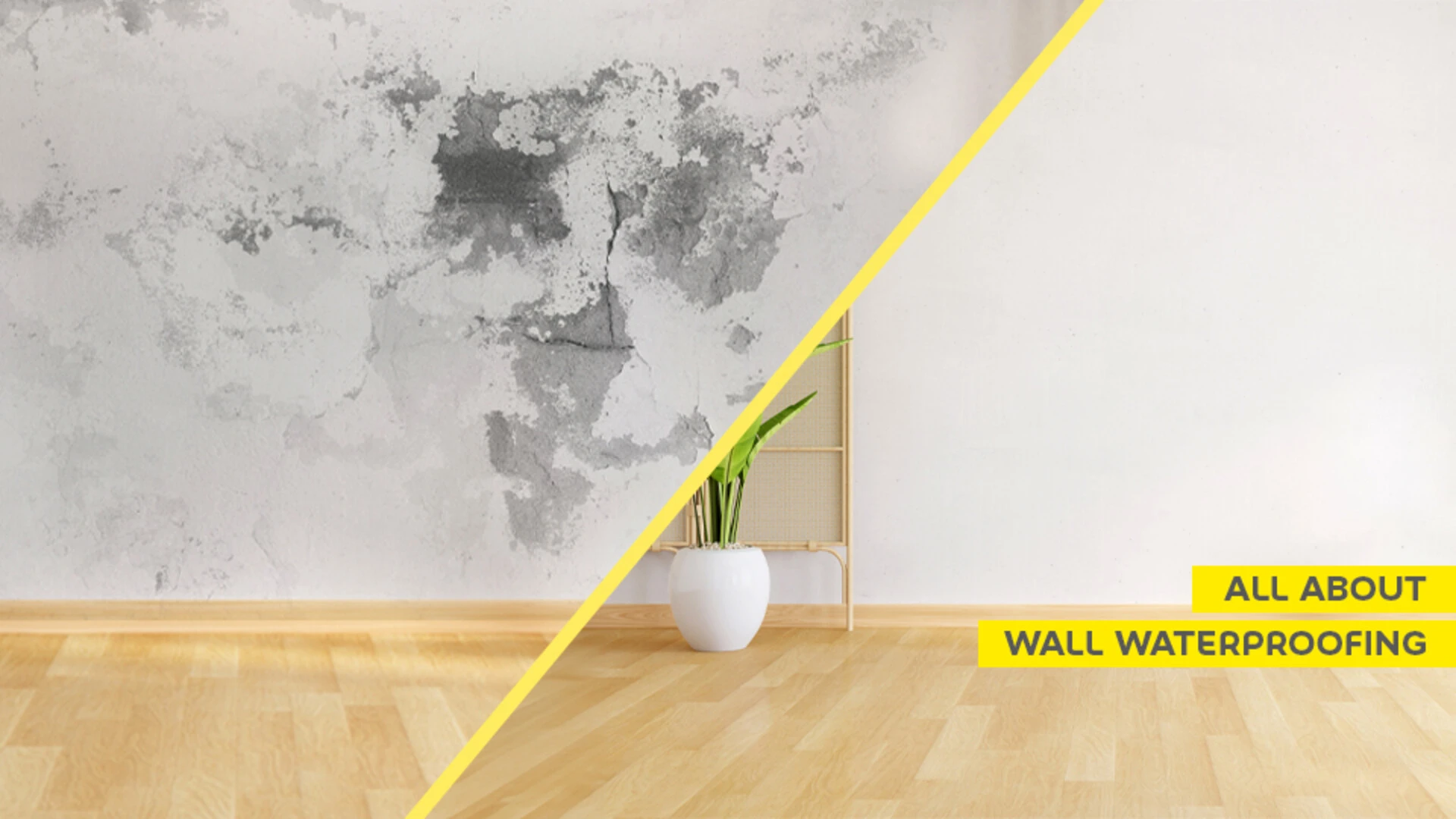Landscape drainage Omaha vs. Interior Waterproofing: Which Should You Choose for Your Property?
How Waterproofing Functions: A Thorough Appearance at Strategies and Technologies
Waterproofing is necessary for securing structures from moisture-related damage. It entails numerous techniques and modern technologies that create obstacles against water invasion. Traditional approaches, such as compacted clay, exist side-by-side with contemporary developments like liquid-applied membrane layers. Understanding the subtleties of these techniques is essential for effective application. The effectiveness of any waterproofing option hinges not just on the techniques made use of however also on recurring maintenance and assessment. What are the vital factors that affect lasting efficiency?
Recognizing the Essentials of Waterproofing
Waterproofing is a vital procedure that safeguards frameworks from water intrusion, which can bring about considerable damages with time. This technique entails the application of various products and strategies developed to create an obstacle against wetness. The primary goal is to stop water from passing through surfaces, which can create damage, mold development, and architectural instability.Various variables affect the option of waterproofing approach, including the sort of structure, its place, and environmental problems. Understanding the physics of water activity and the properties of various materials is vital in choosing an effective waterproofing solution.Effective waterproofing not only safeguards structures but also enhances their long life and stability. Commonly, it is incorporated into the style phase of building to ensure comprehensive defense. As understanding of water-related concerns expands, the value of recognizing waterproofing principles becomes significantly clear to engineers, builders, and homeowner alike.
Conventional Waterproofing Methods
Traditional waterproofing approaches have been used for centuries, depending on reliable strategies and products to protect frameworks from water damages. Among the oldest techniques includes using clay, which, when compressed, produces a natural barrier against moisture. Furthermore, asphalt, a sticky, black material stemmed from petroleum, has been utilized for its waterproof properties, frequently used to roof coverings and foundations.Another technique involves the application of lime-based plasters, which offer a breathable layer that permits wetness to run away while avoiding water access. Thatch roof covering, a typical approach still seen in some cultures, supplies superb waterproofing because of its tightly packed straw layers.Moreover, using stone and brick has been famous, as these materials are inherently resistant to water when correctly installed. Generally, conventional waterproofing techniques stress the value of choosing appropriate materials and building and construction practices to improve sturdiness against water invasion.
Modern Waterproofing Technologies
Innovations in contemporary waterproofing technologies have revolutionized the means structures are secured from water damages. Ingenious approaches such as liquid-applied membranes and sophisticated sealers have enhanced the performance and adaptability of waterproofing solutions. These innovations enable seamless application, decreasing the risk of leaks and making certain thorough protection over complicated surfaces.Moreover, the combination of wise innovations, such as moisture sensing units and automated surveillance systems, makes it possible for real-time assessment of waterproofing performance. This positive technique promotes timely maintenance and lowers long-lasting repair service costs.Additionally, improvements in spray-applied finishes provide fast application and excellent bond, adjusting to different substratums while offering durable defense. Strategies like polymer-modified systems even more boost adaptability and longevity, making them ideal for varied atmospheres. On the whole, contemporary waterproofing technologies not just minimize water invasion but likewise add to the long life and sustainability of frameworks, marking a significant change in the market.
Products Used in Waterproofing
The effectiveness of waterproofing remedies greatly counts on the materials made use of in their application. Numerous materials are used to produce barriers against water access, each with unique properties fit for different settings. Frequently utilized materials consist of membranes, coatings, and sealants.Liquid-applied membrane layers, commonly made from polyurethane or acrylic, develop a seamless obstacle that adjusts to complicated surfaces. Sheet membranes, typically constructed from rubber or thermoplastic, offer durability and are suitable for larger locations. Additionally, cementitious waterproofing materials, composed of cementitious substances, give excellent adhesion and flexibility.Sealants made from silicone or polyurethane are essential for joints and joints, making certain detailed defense. Sophisticated materials, such as geo-composite membranes, combine several features, enhancing performance. In general, the option of waterproofing products is essential in accomplishing long-lasting and effective water resistance, tailored to details job requirements and environmental problems.
Typical Applications of Waterproofing
Waterproofing plays a necessary duty in various markets, guaranteeing the long life and integrity of structures. Usual applications include property remedies that shield homes, business facilities that safeguards organizations, and commercial settings that call for robust security versus moisture. Understanding these applications highlights the importance of waterproofing in preserving both safety and security and performance throughout various settings.
Residential Waterproofing Solutions
Lots of property owners face difficulties with wetness invasion, making efficient residential waterproofing options vital. Different methods exist to address this issue, including inside and outside waterproofing systems. Interior solutions usually involve the application of sealers and coatings to cellar wall surfaces, which assist protect against water infiltration. Outside techniques typically consist of the installment of water drainage systems and waterproof membrane layers that divert water away from the foundation.Additionally, property owners may take into consideration sump pumps to remove water buildup and dehumidifiers to regulate moisture degrees. Proper grading and the use of seamless gutters also play an important function in managing water circulation around the home. By executing these techniques, house owners can greatly reduce the threat of water damage and mold development, ensuring a dry and secure living environment.

Commercial Infrastructure Defense
Effective waterproofing services play a crucial function in the defense of commercial facilities. Sump pump discharge drainage Omaha. These strategies are crucial for safeguarding structures, parking directory structures, and bridges from water damages, which can endanger structural stability and result in expensive repair work. Typical applications include the installment of membrane layers, finishes, and sealers that produce barriers against moisture seepage. Locations such as cellars, roof coverings, and exterior walls are often prioritized to ensure longevity and resilience. Additionally, waterproofing systems can improve energy performance by stopping water-related issues that might bring about mold development and degeneration. By waterproofing shower base implementing robust waterproofing steps, homeowner can safeguard their investments and keep functional effectiveness, ultimately adding to the total sustainability of business centers
Industrial Applications Review
While various fields encounter special challenges, the need for trusted waterproofing services stays a consistent in commercial applications. Industries such as production, building and construction, and energy usually experience settings where moisture direct exposure can jeopardize architectural honesty and functional performance. In making centers, waterproofing is critical for shielding equipment and materials from water damage. In building, it safeguards foundations and cellars against groundwater infiltration. The energy industry relies upon waterproofing for the protection of devices in hydroelectric plants and overseas structures. In addition, food handling industries utilize waterproofing to guarantee hygiene and compliance with security criteria. Overall, efficient waterproofing remedies are essential for boosting durability, safety and security, and productivity throughout different industrial setups.
Upkeep and Longevity of Waterproofing Solutions
Although waterproofing remedies are created to provide long-term security against wetness invasion, normal upkeep is important to guarantee their efficiency and longevity - Landscape drainage Omaha. Regular examinations play a considerable duty in determining prospective concerns such as fractures, peeling off, or indications of water damage. Resolving these issues immediately can stop more wear and tear and expensive repairs.Additionally, cleaning up the surface of waterproof locations helps get rid of dirt and debris that could compromise the integrity of the waterproofing barrier. It's also recommended to reapply protective finishes or sealants as advised by manufacturers to preserve ideal efficiency. Environmental factors, such as UV direct exposure and severe weather condition problems, can impact the life expectancy of waterproofing products, making routine evaluation vital
Frequently Asked Questions
Can Waterproofing Be Applied in Winter?
The inquiry of applying waterproofing in winter elevates concerns concerning bond and treating. Lots of items may not do at their ideal in reduced temperatures, requiring mindful option and consideration why not look here of particular standards for efficient application.
For How Long Does Waterproofing Generally Last?
The period of waterproofing efficiency varies based upon products and ecological variables. Usually, it can last from five to 10 years, however normal upkeep and inspections are necessary to guarantee peak performance and long life.
Is DIY Waterproofing Effective and Safe?
The performance and safety and security of do it yourself waterproofing rely on various elements, including material top quality and application method. While some individuals achieve satisfactory results, others may run into issues that compromise long-term protection and architectural honesty.
What Are the Signs of Failing Waterproofing?
Indicators of failing waterproofing consist of visible water discolorations, peeling paint, mold and mildew growth, moldy odors, and moisture in wall surfaces or ceilings - Water Solutions. These indications recommend endangered barriers, demanding timely examination and potential removal to prevent more damage
Exactly how Do I Pick the Right Waterproofing Specialist?
